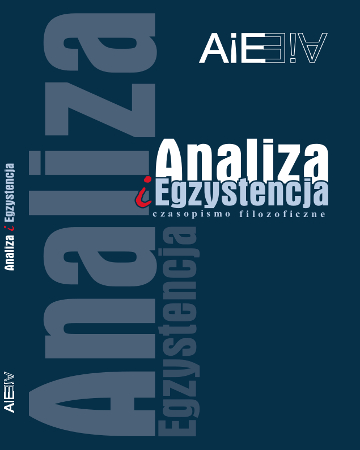
ISSN: 1734-9923
eISSN: 2300-7621
OAI
DOI: 10.18276/aie.2022.58-05





Issue archive /
58 (2022)
Build What You Think. Philosophical Education Using the LEGO-LOGOS Method
| Authors: |
Paweł
Walczak

Instytut Filozofii Uniwersytet Zielonogórski |
| Keywords: | philosophy education LEGO bricks teaching methods ethical education pedagogical innovations |
| Data publikacji całości: | 2022 |
| Page range: | 18 (93-110) |
Abstract
LEGO bricks have an enormous educational potential. The article analyzes the possibility of using the bricks in teaching philosophy. As a case in point, it describes the LEGO-LOGOS project, a method where the bricks have been successfully used in opening students to philosophical ideas. The project makes use of play (in this case with the LEGO bricks) to introduce students to philosophy and philosophizing. It tackles one of the biggest obstacles in teaching this subject, that is the resistance of students to formulate and express their thoughts as the method allows for a free and creative expression of ideas and interpretations. The article describes the structure of the classes where the method is to be used and provides an analysis of educational and philosophical assumptions of LEGO-LOGOS also touching on the possibility of using the method as a tool in the school setting and beyond.
Download file
Article file
Bibliography
| 1. | Bedford, A. (2013). The Unofficial LEGO Builder’s Guide. San Francisco: No Starch Press. |
| 2. | Gauntlett, D., & Holzwarth P. (2006). Creative and visual methods for exploring identities. Visual Studies 21, No. 01. 82-91. https://doi.org/10.1080/14725860600613261. |
| 3. | Haynes, J., & Murris K. (2009) Opening Up Space for Children’s Thinking and Dialogue. Farhang, no. 69. 175-188. |
| 4. | Hicks, K. (2015). 12 Unexpected Ways to Use LEGO in the Classroom. Edudemic, March 2015. www.edudemic.com/12-ways-use-LEGO-classroom/. |
| 5. | Hinthorne, L. L., & Schneider K. (2012). Playing with purpose: using SERIOUS PLAY to enhance participatory development communication. International Journal of Communication, Vol. 6. 2801–2824. |
| 6. | James, A. R. (2013). LEGO SERIOUS PLAY: a three-dimensional approach to learning development. Journal of Learning Development in Higher Education, no. 6. 1-18. |
| 7. | Kubat, K. (2011). Jarosław Marek Spychała “Lego-Logos”. In: S. Rudnicki (ed.), Nowe pespektywy. Nauki społeczne dla gospodarki (195-207). Kraków: Wyższa Szkoła Europejska im. ks. Józefa Tischnera. |
| 8. | Marsh, S. (2015). Five ways teachers use LEGO creatively in class. The Guardian, January 13. https://www.theguardian.com/teacher-network/2015/jan/13/five-ways-teachers-use-LEGO-creatively-class. |
| 9. | Nerantzi, Ch., & Depard C. (2014). Do LEGO Models Aid Reflection in Learning and Teaching Practice? Journal of Perspectives in Applied Academic Practice 2, no. 2. 31-36. |
| 10. | Parker, R., & Thomsen Bo S. (2019). Learning through play at school. Billund: The LEGO Fundation. |
| 11. | Plato. Republic. Translated by Allan Bloom. New York: Basic Books, 1991. |
| 12. | Russell, H. (2013) Bricks and mortarboard: first LEGO-funded school opens in Denmark. The Guardian, August 9. https://www.theguardian.com/world/2013/aug/09/LEGO-funded-school-denmark-innovation. |
| 13. | Spychała, J. (2017). Eracle, Gesù Cristo e Darth Vader al bivio. Il messaggio etico del metodo LEGO-LOGOS. Lessico di etica pubblica 8, no. 1. 67-89. |
| 14. | Spychała, J. (2014). Bulletproof – platońskie przesłanie LEGO-LOGOS. In Jak uczyć by nauczyć, edited by Wanda Kamińska. Warszawa. 311-354. |
| 15. | Warner, M. (2016). Ways to use LEGO in the classroom. Teaching Ideas, January. https://www.teachingideas.co.uk/maths/ways-to-use-LEGO-in-the-classroom. |
| 16. | Zimmerman, A. (2016). Using LEGO to Build Math Concepts. Scholastic, May 19. http://www.scholastic.com/teachers/top-teaching/2013/12/using-LEGO-build-math-concepts. |